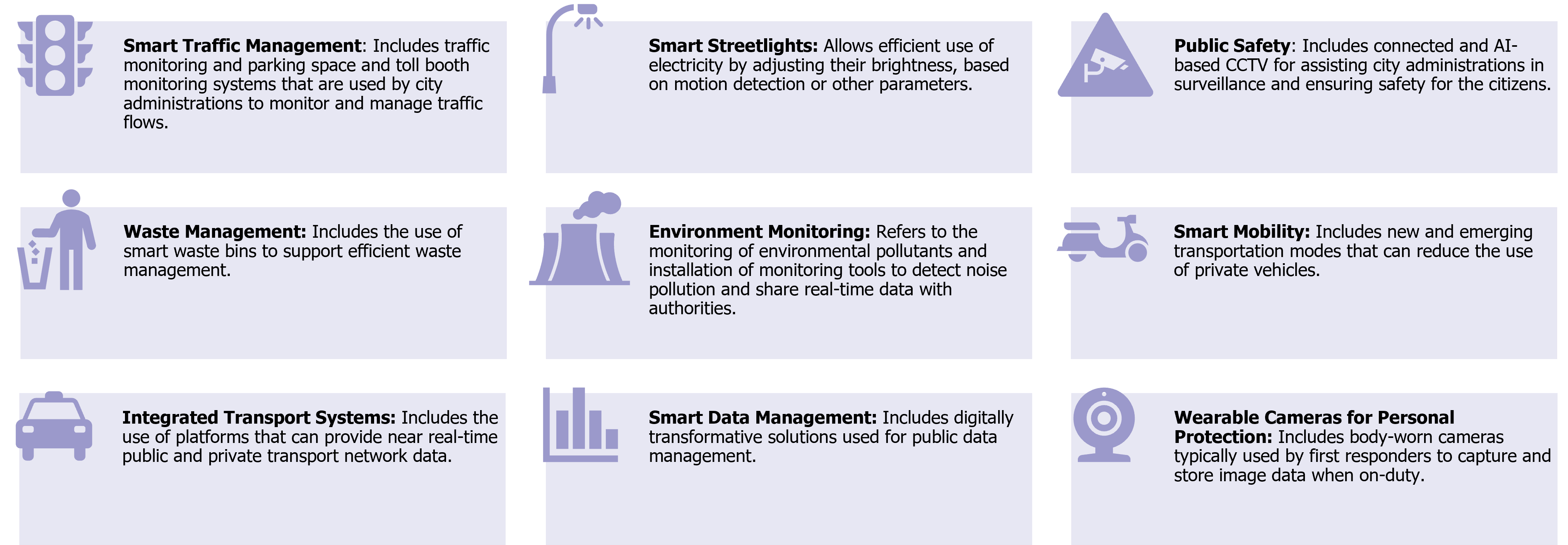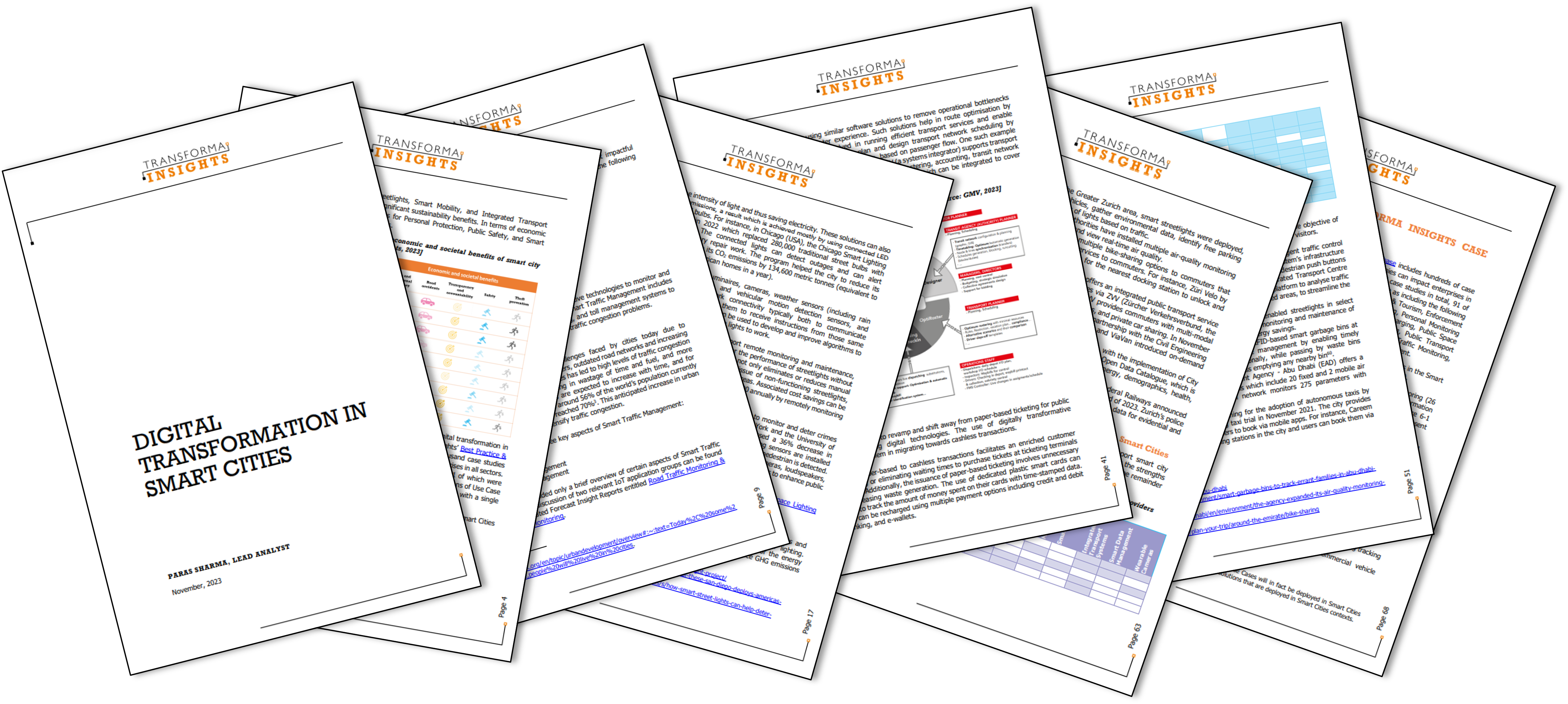Digital transformation is a smart cities context is becoming an ever-higher priority. Urban populations worldwide are growing quickly, whilst urban residents place an increasing premium on sustainability and quality-of-life considerations. The net result is that cities must deliver more and higher quality services, whilst using less resources. Thus, the digital transformation of cities is to a great extent unavoidable.
A hidden benefit of the digital transformation of smart cities is that it allows for a greater density of economic activity, so allowing more and higher quality city services to be funded for city dwellers and commuters.
Overall, we have identified nine key domains of change in the Smart Cites sector that are enabled by digital transformation, as illustrated below.

These domains of change are discussed in more detail in our report Digital Transformation in Smart Cities:

The domains of change discussed in the report comprise:
Collectively, the activities listed above will bring significant changes to the Smart Cities sector.
IoT is one of the key technology groups impacting the Smart Cities sector and further detail and analysis of key IoT applications for the Smart Cities sector can be found in Transforma Insight’s Forecast Insight Reports. Some of these applications are directly relevant to the sector, whilst others are only indirectly related.
Directly related IoT applications and Forecast Insight Reports include:
Indirectly related IoT applications and Forecast Insight Reports include:
Besides the detailed sector-focussed content described above, Transforma Insights offers an extensive range of thematic- and vendor-focussed research that will prove invaluable to any end-user seeking to leverage new and emerging digitally transformative technologies.
Of particular note are our Vendor Insight and CSP Peer Benchmarking reports, which provide detailed profiles of leading vendors who might be able to support a range of end-user digital transformation projects.
Our Key Topic Insight reports focus on the qualitative aspects of Digital Transformation, including investigation of interesting or noteworthy topics.
Detailed analysis of regulations that might apply to digitally transformative projects around the world can be found in our Regulatory Database. Meanwhile, our Case Study Database contains more than 1,000 case studies of technology implementations. Each case study contains detailed information on the specifics of the deployment. Used in aggregate it can provide unrivalled guidance on project prioritisation, best practice and vendor selection.